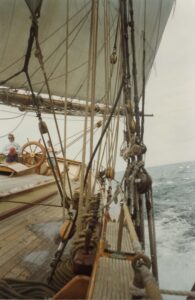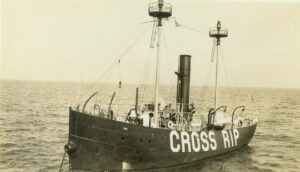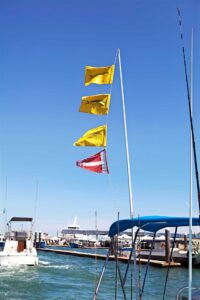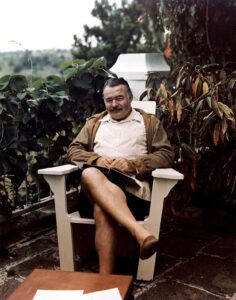When you think about Miami Beach, I seriously doubt avocados and elephants come to mind. Nightlife and models probably do. Art deco architecture might. Don Johnson might if you’re above a certain age. Luxury boats certainly should, because they are big business in South Florida.
Companies that promote boating lifestyles from family fishing to yacht cruising contribute $12.5 billion annually to the regional economy, according to the Marine Industries Association of South Florida. The re-tooled 2022 Miami International Boat Show is expected to be one of the largest events in the world.

Yet, it was the humble avocado that lured a New Jersey Quaker by the name of John Collins to a desolate strip of mangroves, swamp, mosquitoes and crocodiles four miles off the shore of Miami. Earlier men tried growing coconuts there, but they had neither the horticultural experience nor the passion of John Collins, who ran a successful nursery and farmers’ supply yard in the Garden State and had a reputation as an innovative farmer.
In the late 1890s, Collins joined a partnership with fellow New Jerseyans to turn the untamed barrier peninsula between the Atlantic Ocean and Biscayne Bay into a full-fledged, modern farm growing exotic crops such as avocados, commonly known back then as “alligator pears.” Native to Mexico and Central and South America, the first avocado groves were planted in Florida in 1833. The state today is the second largest producer of avocados in the United States.
Clearing the land proved to be a time-consuming and costly venture. Work was done by hand by black laborers with machetes until Collins built a tractor with special knife-bladed wheels. By 1909, he had cleared 1,670 acres of land, bought out his partners, and was successfully growing avocados, mangos, and tomatoes. He was 71 years old.
At this point, younger members of the Collins family got involved, curious to know what the old boy was doing in South Florida and where the family money was going. They immediately saw the tourism potential of the seaside property and formed a development company. One of their major projects was to build a bridge to the mainland. They dreamed of riches derived from creating a new “Atlantic City” in south Florida – a nod to the wildly popular New Jersey beach resort they knew at home.
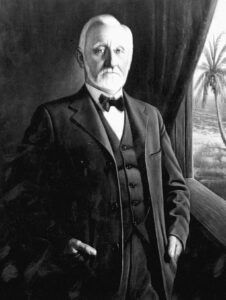
The bridge project proved much more expensive than planned, mainly because instead of using basic wooden support pilings they had to sink the pilings in sheet iron casings filled with concrete to stave off the wood-eating teredos (aka shipworms) in Biscayne Bay. Work ground to a halt with only a half mile of bridge built.
Enter Carl Fisher, a wealthy entrepreneur from Indiana who made his fortune in the early years of the automobile industry. Fisher was also a sportsman with an affinity for fast cars and boats. He launched the Indianapolis 500 and was involved in developing the Dixie Highway that linked the Midwest to Florida.
The story goes that while on a fishing trip, the unfinished bridge sticking out into Biscayne Bay caught Fisher’s eye. With Fisher’s money, the Collins family completed the bridge in 1913. At the time it was the longest wooden bridge in the world.
Carl Fisher and his wife Jane settled on the peninsula. They too started a real estate development firm and built the first luxury hotel — The Flamingo — along with tennis courts, a swimming pool, golf course and polo field. Fisher also joined the Collins family and other early developers to incorporate Miami Beach in 1915.
By now you must be wondering where the elephants come in? Well, Carl Fisher had a talent for promotion. He realized his hotel and local businesses — and the fledgling city — would need publicity to thrive. He hired beautiful young women in skimpy bathing suits, organized speed boat races, and even went so far as to bring in a pair of pachyderms — Rosie and Carl Junior.
Fisher sent the media photos of bathing beauties on the beach and at The Flamingo and of the elephants helping clear the land, rolling out the polo grounds, and performing for childrens’ birthday parties — anything he could think of to attract attention.
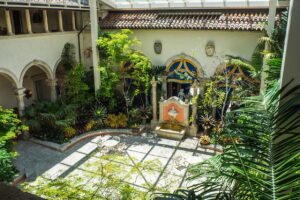
Rosie once made an appearance at a bank opening. Cameras flashed, people cheered and Rosie shat all over the bank floor. Rosie, however, could do no wrong. The media and the public went wild for her. Rosie became so popular across the country that she even had her own fan club.
Fisher’s pièce de résistance was luring President Warren G. Harding to Miami Beach and to his Flamingo Hotel in the winter of 1921 where the President was photographed swimming, enjoying cocktails and sport fishing aboard Fisher’s yacht. The President even agreed to be photographed with Rosie as his caddy during a round of golf. Fisher’s publicity put Miami Beach on the map as a fashionable resort. Visitors came. Property prices boomed. Fisher even recruited architects to design hotels in the Art Deco style du jour.
And during it all, while his children prospered in real estate, John Collins never forgot about his avocado trees. By 1922, Miami Beach had the largest avocado and mango groves in the world. But you already know how this story turned out. Avocados and farmland gave way and were simply no match for the tourist trade. Hotels kept getting built, and visitors kept on coming.
John Collins died in 1928 at the age of 90. The city named its main thoroughfare Collins Avenue in his honor. Carl Fisher died in 1939, and the city erected a monument to the man known as “The Father of Miami Beach” in 1941. Rosie the elephant outlived them both! And the city they helped build enjoys a reputation today as a world class tourist destination with no sign of slowing down.
Must-See Historic Properties in the Miami Area
Villa Vizcaya Museum & Gardens
vizcaya.org
James Deering, the co-founder of International Harvester built this over-the-top Italian Renaissance-style villa in 1914. Deering used the 34-room home as his winter retreat until his death in 1925. Of note is the elaborate stone Venetian barge built offshore in Biscayne Bay to protect the house from storms and used as a venue for parties and a mooring point for Deering’s yacht, Nepenthe, which sank in the ferocious hurricane of 1926.
The Barnacle
floridastateparks.org/parks-and-trails/barnacle-historic-state-park
The oldest house in Miami-Dade County still stands in its original location on Biscayne Bay. It was built in 1891 by Ralph M. Munroe, a noted south Florida photographer, yacht designer and first Commodore of the Biscayne Bay Yacht Club. An active naturalist, Munroe preserved the property’s original tropical hardwood forest (aka hammock) and fought against establishing of artificial islands and pumping raw sewage into the bay. He died in 1933 and his family lived here until it became a state park in 1973.
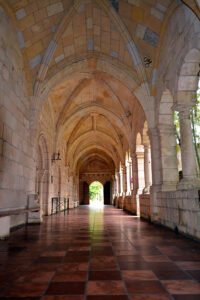
The Ancient Spanish Monastery
spanishmonastery.com
This 12th century monastery of St. Bernard de Clairvaux was purchased in Spain by newspaper magnate William Randolph Hearst in 1925. He had the stone structure dismantled and shipped across the Atlantic in 11,000 boxes to New York. Mr. Hearst intended it to grace the grounds of his San Simeon estate in California. But the Great Depression intervened, he lost interest and the crates sat in a warehouse in Brooklyn until 1952. Eventually, the monastery was purchased and painstakingly re-assembled in Florida. In 1964, it was given to the local Episcopal Diocese in North Miami Beach and is one of the best Medieval reconstructions in America.


